The overflowing legacy of Steve Nash

This story will also appear in the March 30 issue of SI. To subscribe, click here.
On March 12 at the Langley Events Center in Langley, British Columbia, St. Michaels University School played G.W. Graham Secondary School in the quarterfinals of the provincial championship tournament. The G.W. Graham point guard was a 5’10”, 145-pound sophomore named Gabe Mannes. When he took the court, he wiped the soles of his sneakers. Before he caught an inbounds pass, he licked the tips of his fingers. After he hoisted a shot, he held his follow-through, wrist bent at 90 degrees. “Every mannerism,” says St. Michaels coach Ian Hyde-Lay, “exactly the same.”
Legacy is a word that gets thrown around a lot in sports, often incorrectly. The formal definition – “something received from a predecessor” – is far different than the popular meaning. Legacy increasingly refers to an athlete’s compilation of awards, records and championships. But those are lines on a résumé. Nash's imprint on the future is his legacy.
When Gabe Mannes touches his sneakers, that’s Steve Nash. When Goran Dragic deploys the up-and-under, that’s Steve Nash. When Tony Parker runs three pick-and-rolls on the same possession, when Damian Lillard lets it fly because a foolish defender sneaks under a screen, when Rajon Rondo drives inside, circles back, and patiently finds a cutter, that’s also Steve Nash. When the Warriors go small, the Hawks go fast, and somebody somewhere torches a trap with a meticulously placed bounce pass to a careening giant, that too can be traced at least in part to Steve Nash. His legacy lives in Chris Paul and Kyrie Irving, Russell Westbrook and Ricky Rubio, even if they don’t fully recognize it. It lives in random Canadian teens like Gabe Mannes, who does not even attend Nash’s alma mater, but clearly hails from his school. All these young point guards enjoy freedoms Nash made possible. “He created a new way to play,” the Warriors’ Steph Curry says. “He inspired me to play the way I was comfortable.”
After 18 trend-setting, pocket-passing, finger-licking seasons, Nash is retiring from the NBA. The end was interminable, three wretched years in Los Angeles, sabotaged by nerve damage in his back that deepened with every change of speed and direction. Fast breaks were brutal and road trips unbearable. The frayed nerve caused his hamstring to feel perpetually pulled, and while he could ignore the rising pain, he could not overcome the diminished dexterity. He lost the agility that allowed him to maneuver around screens and exploit angles. He lost the thing that made him Steve Nash.
He spent practices in the weight room at the Lakers training facility and games in the weight room at Staples Center, performing choreographed exercises that looked like tribal dances. “Keep chipping away,” he’d tell strength and conditioning coach Tim DiFrancesco, a mantra that eventually nauseated both men. “Every day was like another hit in the nose with a hammer,” DiFrancesco says. The only thing Nash chipped away was his own psyche.
He played 15 games last season and felt as if he needed three weeks to recover from each one. “Oh s---, am I done?” he’d ask himself on the mornings after. “Is it gone? Is it over?” The anxiety fed the agony. The Lakers' announcement in October, ruling him out for 2014-15, was a reprieve. His body made the call that his heart couldn’t. Nash would retire, and everyone around him knew it, but he didn’t discuss the decision publicly until Wednesday afternoon on the patio of a Greek restaurant two blocks from his home in Manhattan Beach.
“I subscribe to the idea that an athlete dies twice,” says Nash, 41. “It’s hard. You’re going to miss it forever. You have to take some time and grieve your former self.” He does not know where exactly he stands in the mourning process. He views himself neither as the legend who captured two MVPs in Phoenix nor as the convalescent who struggled to carry his luggage in L.A. “I’m still just the kid from Canada with one scholarship offer,” Nash says. He is the Santa Clara freshman who kept getting stripped at center-court by teammate John Woolery and considered leaving until an R.A. in his dorm helped convince him to stay. He is the junior who spent his summer around Gary Payton and Jason Kidd at Cal, where a loose ball once rolled out of the gym and Payton cracked: “Let the little man go get it.” He is the senior who was nitpicked by NBA evaluators convinced he didn’t have the right specs and he didn’t come from the right place and he didn’t even walk the right way.
“He’s not pigeon-toed enough,” lamented Phoenix scouts, who preferred Syracuse’s John Wallace with the No. 15 pick in the 1996 draft. But the Suns had just hired 33-year-old assistant coach Donnie Nelson, formerly in Golden State’s front office, who met Nash when he starred at St. Michaels and drove down to Seattle for a Sonics-Warriors game. “Okay, whatever, church boy Steve,” Nelson thought at the time. But his opinion changed as he tracked Nash through the tournament games at Santa Clara and the pick-up runs in Oakland. The day of the draft, Suns owner Jerry Colangelo asked Nelson, “You feel good about this kid?” Colangelo liked Nash, as did assistant coach Danny Ainge. Nelson confirmed their instincts. “If Stevie is not a success,” he replied, “you can have my job.”
“I subscribe to the idea that an athlete dies twice,” says Nash, 41. “It’s hard. You’re going to miss it forever. You have to take some time and grieve your former self.”
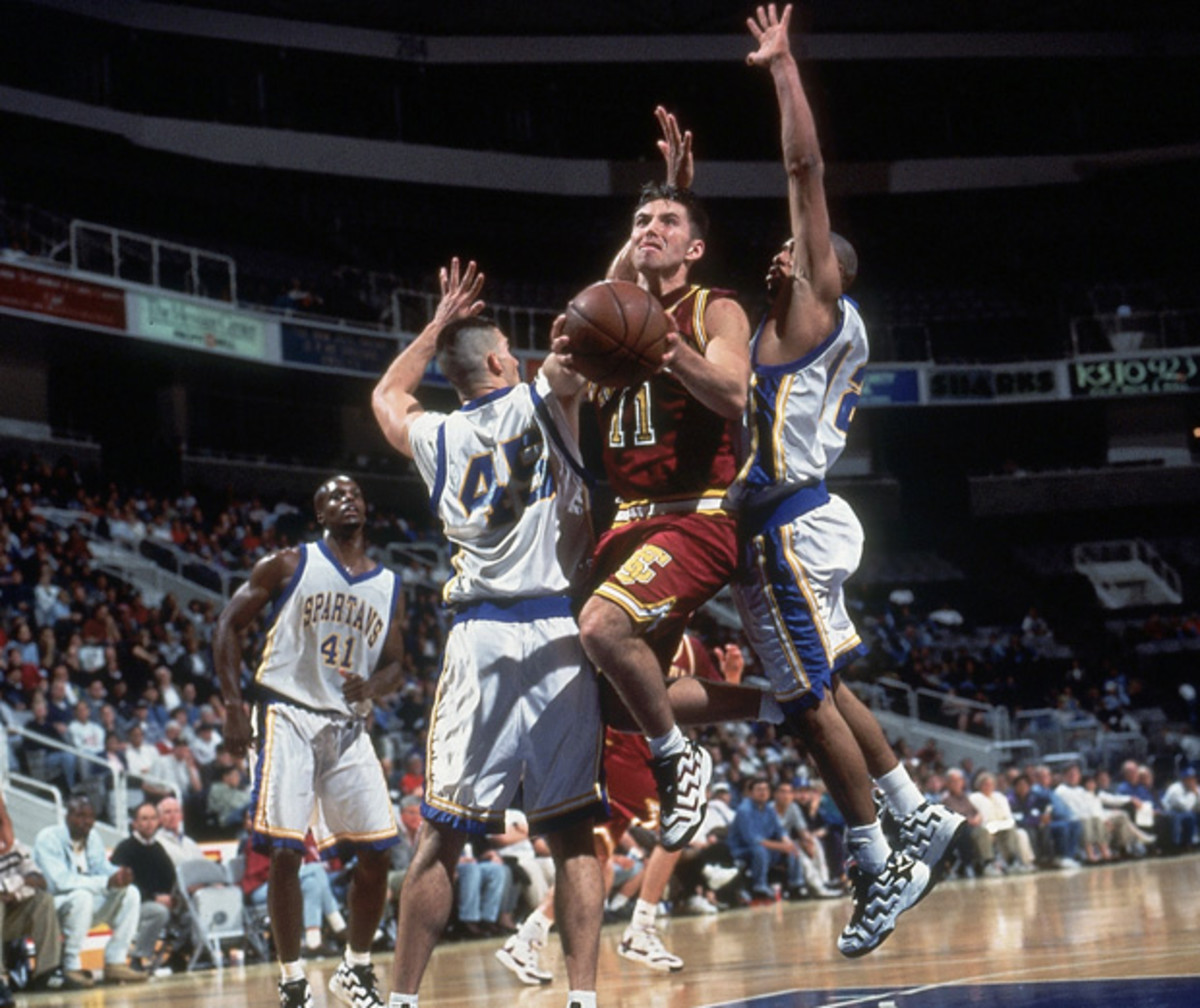
Nash entered the league as a third-stringer, stuck behind Kidd and Kevin Johnson, putting himself through two-a-days to learn a floater and a crossover. Reaching the NBA as a 6’3”, 195-pound Canadian was daunting. Piling up more than 17,000 points and 10,000 assists, despite a congenital back condition, was unfathomably difficult. “I didn’t feel right if I didn’t train,” Nash says. “I didn’t sleep well if I didn’t train. So I just trained all the time. I was preoccupied with the thought that I should be in the gym. That made me the player I was, but at the same time, I became a prisoner of it.” Even when he qualified for eight All-Star teams, he barely enjoyed the experience, fearing he might jinx himself. “I felt like if I ever sat back, happy about something, reality would be right around the corner,” he says. “So you get back in there early tomorrow and try to push it all away.”
Sitting on the patio, half-a-dozen blocks from the beach, he looks relieved. He wears a T-shirt and shorts, shoes with no socks. His expression has always been serene, masking the furnace inside, but he seems to smile more. He hasn’t unleashed a shot in five months, which he mentions with pride, like an alcoholic who wants you to know how long it’s been since he touched his last drink. “Shooting, for me, was an addiction,” he says. “It was an obsession. I put so much pressure on myself for so long. In some ways it is a relief to finally back away from the edge of that cliff.”
He has no clue how he will replace the rush, if he even wants to, so for now he plays weekly seven-on-seven soccer games at a park in Venice, helps his kids with their homework, walks the dog. He believes he will find the right outlet organically. He is not the type to pop in old Suns tapes or draw comparisons with Curry. He recoils at the mention of legacy and chuckles at the suggestion that he changed the sport in any fundamental way. But if there has been a death, then there has also been an inheritance, one eternal dime passed down from the ultimate floor general to his many heirs.
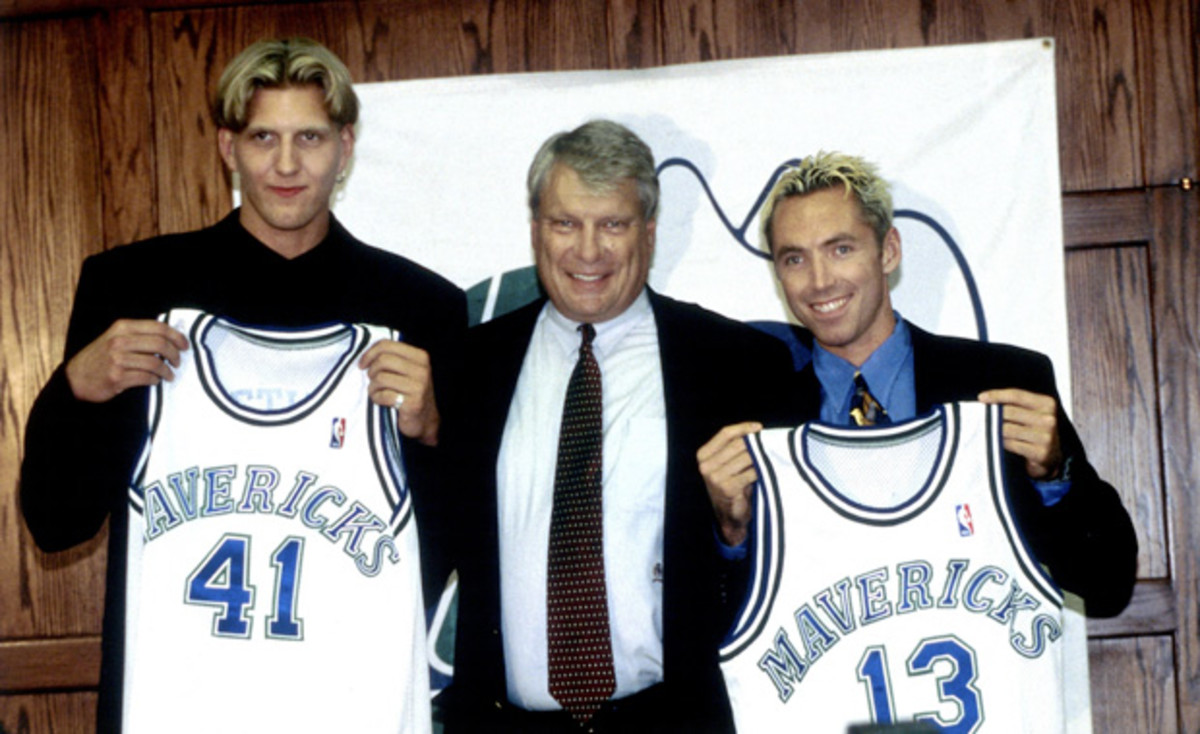
It is impossible to pinpoint the time and place when the NBA’s point guard revolution began, but the spring of 1999 in Dallas is as good of a guess as any. Donnie Nelson had moved to the Mavericks and helped convince his father, head coach Don Nelson, to acquire Nash. Donnie would come out looking like a genius, yet again, but it took a while. Nash’s first season in Dallas was the worst of his professional career. During a particularly grueling stretch, long-time agent Bill Duffy called every day for three weeks to offer encouragement. Nellie wasn’t as empathetic. He didn’t understand why Nash kept turning down shots. “I’m the point guard,” Nash explained. “I want to pass. It’s my nature.” In ’99, that was still a reasonable stance for a ball-handler to take. “It’s bulls---,” Nellie responded. “You’re a dominant f------ player.’” Nellie believed, as most contemporary coaches do, that the best point guards should shoot as well as pass, one skill complementing the other.
On March 24, Dallas lost to Houston and Nash went 1 of 10 from the field. Mavericks forward Dirk Nowitzki remembers the 1. “I was on the bench and the fans were booing him over and over again,” Nowitzki recalls. “Right when the booing got really bad, Steve ran down the court as fast as he could, put up a three and hit it. I thought, ‘Wow, this guy has big stones in his pants.’”
Nowitzki and Nash rebirthed pro basketball in Dallas. They arrived together, as the headliners in a transformational three-team trade, but Nowitzki was a draft choice from Germany and wanted to spend two more years in Europe. The Mavericks urged him to fly over for the press conference, meet Nash, then decide. They wound up living in the same apartment complex, playing H-O-R-S-E every off-night at Reunion Arena, and experimenting with the pick-and-roll. “Here’s a guy who is 5’10”, slow, and un-athletic,” says Nowitzki, prone to hyperbole. “He’s driving into trees, getting trapped in mid-air, and somehow throwing the ball through his legs to a shooter in the corner.”
A lifelong Spurs fan, Steve Nash can talk soccer as good as anyone
The Mavs adored Nash, but they fretted about his back, and the Suns outbid them in ‘04. “We didn’t even know how we were going to play,” says former Suns coach Mike D’Antoni. In Europe, D’Antoni’s teams treated games like rapid-fire recitals, spacing the floor and uncorking the three. “I was afraid to do that here,” says D’Antoni. “Everyone told me, ‘You’ll kill your players. You’ll get fired.’” That summer, D’Antoni met with Jerry and Bryan Colangelo, and they uttered the words he had been waiting to hear: “Use your best five.” D’Antoni shifted Amar’e Stoudemire to center and Shawn Marion to power forward, radical moves that downsized the lineup, spread the floor, and enabled Nash to reimagine offense.
“He showed what can happen when a great point guard has an open court and the freedom to make choices,” D’Antoni says. “The game explodes.” The Suns failed to capture a championship, so they were easy to dismiss as a seven-second novelty act, but they’ve flourished in other incarnations. Watch the Spurs and the Warriors, the Hawks and the Rockets, running their incessant pick-and-rolls. You’ll notice hints of the Suns in all of them. “It looked like chaos,” remembers Grant Hill, now an NBA analyst for Turner Sports. “But eventually teams adopted their style and Steve was largely responsible for that. It used to be the point guard came down, threw the ball inside or gave it to a wing. He provided a new blueprint. If you’ve got a guy like Curry or Lillard, Westbrook or Paul, you hand him the keys. Maybe you have some sets, some structure, but you basically trust his instincts and let him go.”
Hill signed with Phoenix in ’07 and was greeted with bullet passes he couldn’t see coming. “If you missed one,” Hill recalls, “Steve would say, ‘My fault,’ and then he’d go right back to you.” Sprinting alongside Nash, Hill resuscitated his career, same as Channing Frye, Marcin Gortat, and scores of others. Take Tim Thomas, for example, a 36.9 percent three-point shooter who rose to 42.9 in his lone season with the Suns. He parlayed that spike into a $24 million contract from the Clippers and was barely heard from again.
Nash’s legacy transcends positions and crosses borders. When he was growing up in Victoria, B.C., he could count on one hand the number of significant NBA players from Canada. Over the past four years, the country has produced five lottery picks, including the last two No. 1s. He makes everyone better is the phrase most often used to describe Nash, and it rings true throughout North America, except perhaps in the city where he happens to live.
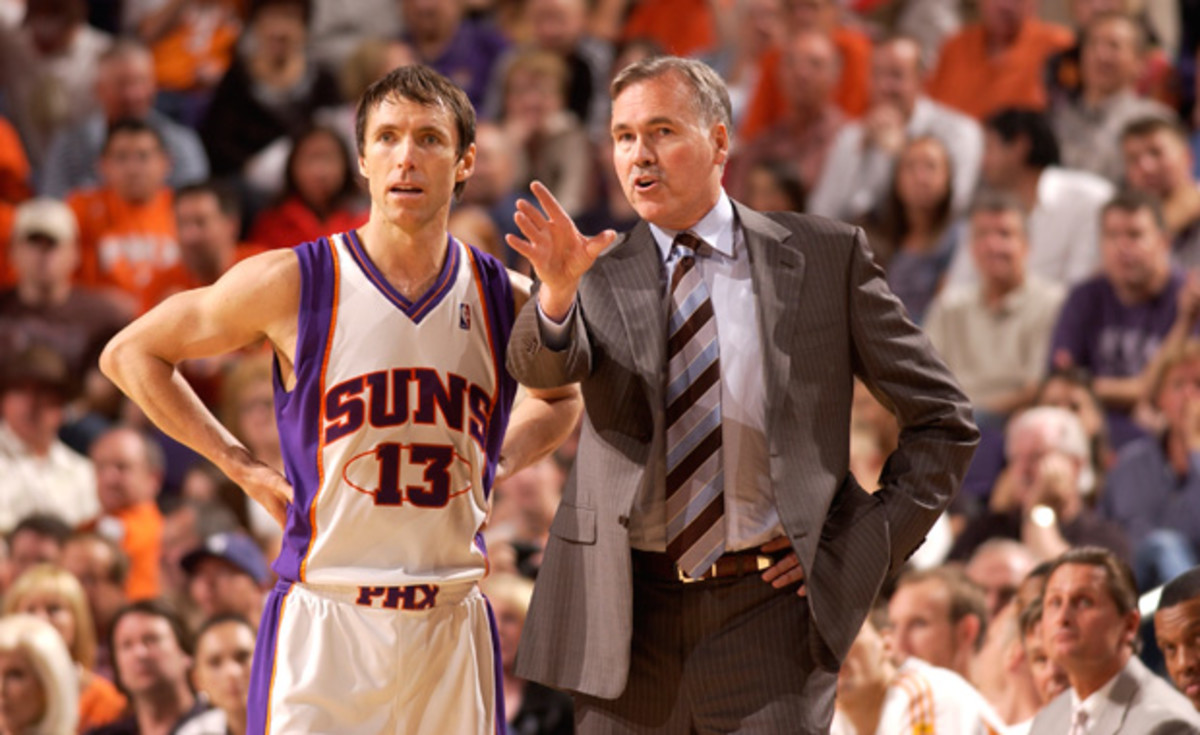
In the summer of 2012, Nash had a chance to depart the sinking Suns for the Lakers, Knicks or Raptors. “I want to be in the fire,” he told his friend, Steve Kerr, the Warriors coach. “I want the biggest risk and the biggest reward.” The sign-and-trade that sent Nash to Los Angeles, and four draft choices to Phoenix, crippled both an iconic player and a signature franchise. Nash completed one game before he broke his left leg. Shortly thereafter, he was rehabbing and the Lakers were rebuilding, an onerous task given all the picks they had surrendered.
Even after Dwight Howard bailed for Houston and Pau Gasol for Chicago, Nash was still hanging around the periphery of the team, his back an issue and his $9.7 million salary an albatross. In Canada, Arizona and Texas, his name was synonymous with golden eras. In Southern California, it evoked unusually dark days. “What I saw was a guy in a fishbowl, swimming in circles, swimming upside down, trying to jump out, and constantly hitting his head on the glass,” says Lakers strength & conditioning coach DiFrancesco. “Meanwhile, everybody is banging on the glass like, ‘Come on, Steve, get going, get your act together, stop bs’ing around.’ They’re seeing him float through the end of his contract. But I was inside that fishbowl and my view was, ‘No one is swimming harder and trying more ways to get the hell out of this bowl.’”
When the glass shattered in October, Nash immediately leapt into meetings with his film production company and his foundation, eager for a second act. “It was madness,” he says. He gave himself no time to grieve. Nash finally met with another young retiree, from the business world, who shared a popular Buddhist philosophy: “Empty your cup.” The saying is traditionally attributed to a Chinese Zen master, encouraging a student to clear his mind, so it can be filled anew. Nash’s absence from the Lakers facility perturbed fans, but he was draining his cup, remaining on the roster only in case the club wanted to trade his expiring contract.
GALLERY: Rare photos of Steve Nash
Rare Photos of Steve Nash
Steve Nash
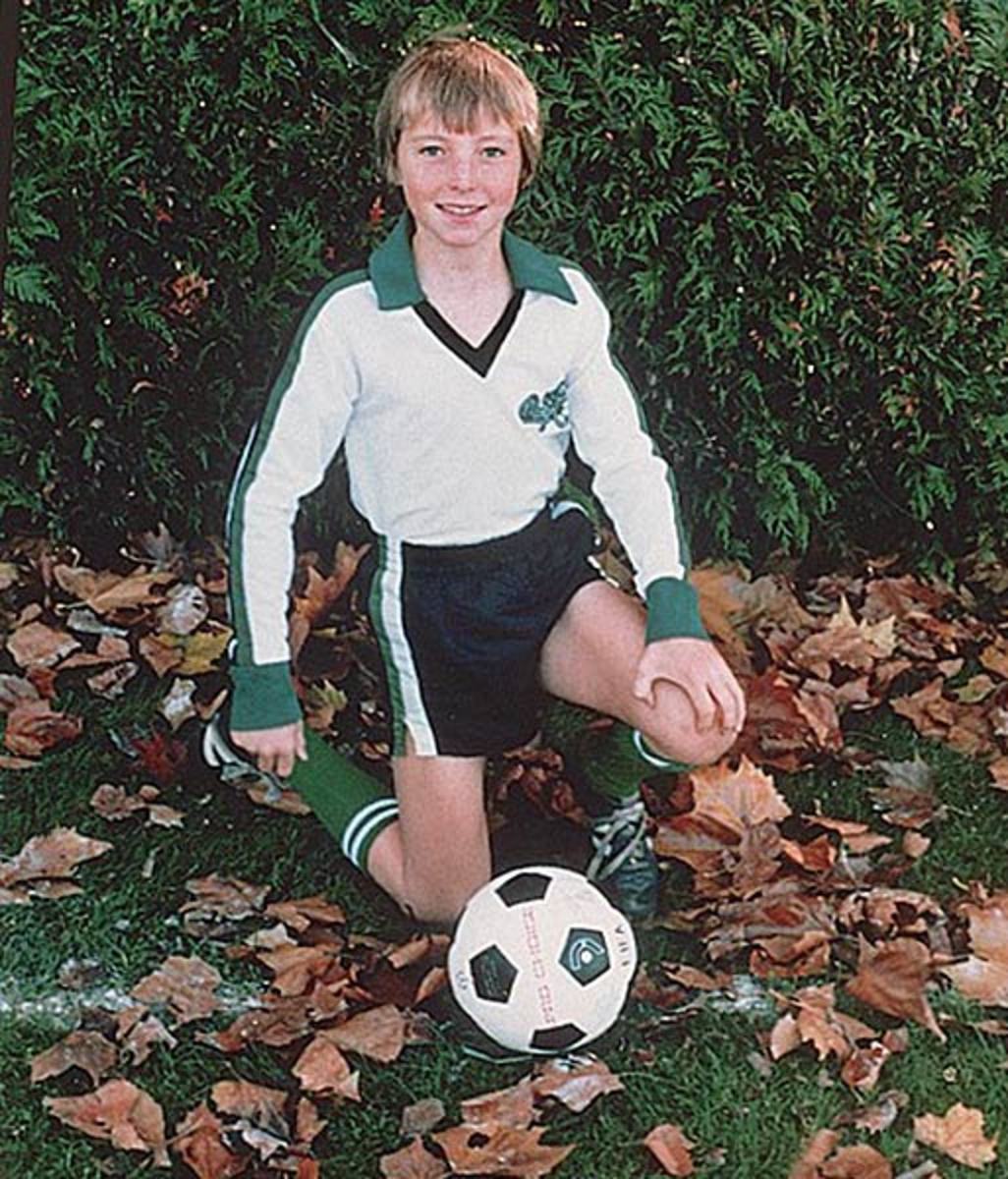
The two-time NBA MVP was born in Johannesburg, South Africa. His father played professional soccer and the family lived in a number of places before setting in Victoria City near Vancouver.
Steve Nash

Like most Canadian boys, Nash quickly fell in love with hockey. His favorite team was the Vancouver Canucks and his favorite player was Wayne Gretzky. He also played lacrosse and rugby, but didn't discover basketball until the eighth grade.
Steve Nash

Though he was one of the top basketball players in Canada, Nash was not highly regarded as a recruit. The only scholarship offer he received was to Santa Clara, on the condition that Nash improve his suspect defense.
Steve Nash

Nash was an immediate hit on the court, leading Santa Clara to its first NCAA Tournament appearance in five years. The No. 15 Broncos upset Arizona in the first round before losing to Temple the following game. Despite the loss, Nash had Santa Clara on the national radar. He would lead the team to two more tournament appearances over the next three years as he garnered a reputation as one of the nation's top point guards.
Steve Nash and Allen Iverson
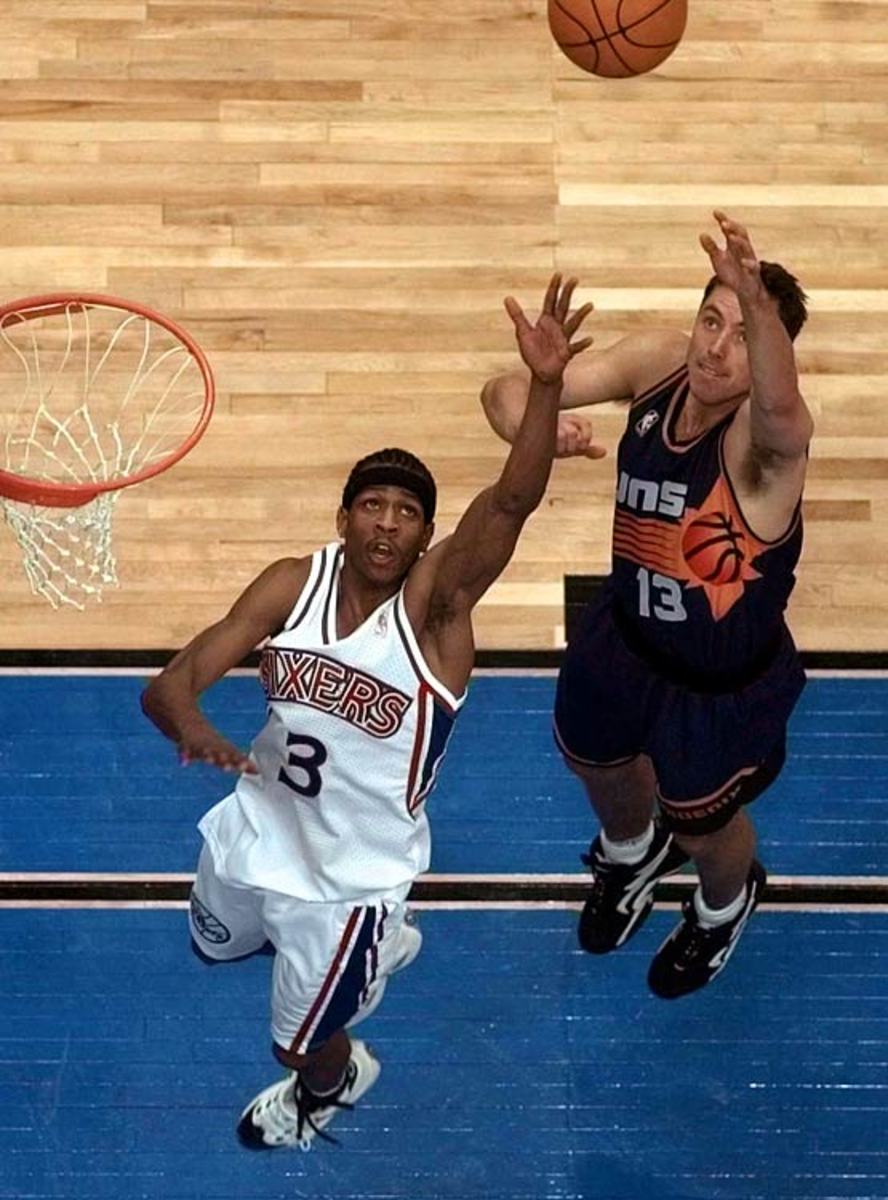
Nash was selected by Phoenix with the 15th pick in the first round. He was considered the best pure point guard in the draft, compared to the natural scorers like Allen Iverson and Stephon Marbury, who were also listed at the position.
Steve Nash and Yudi Abreu
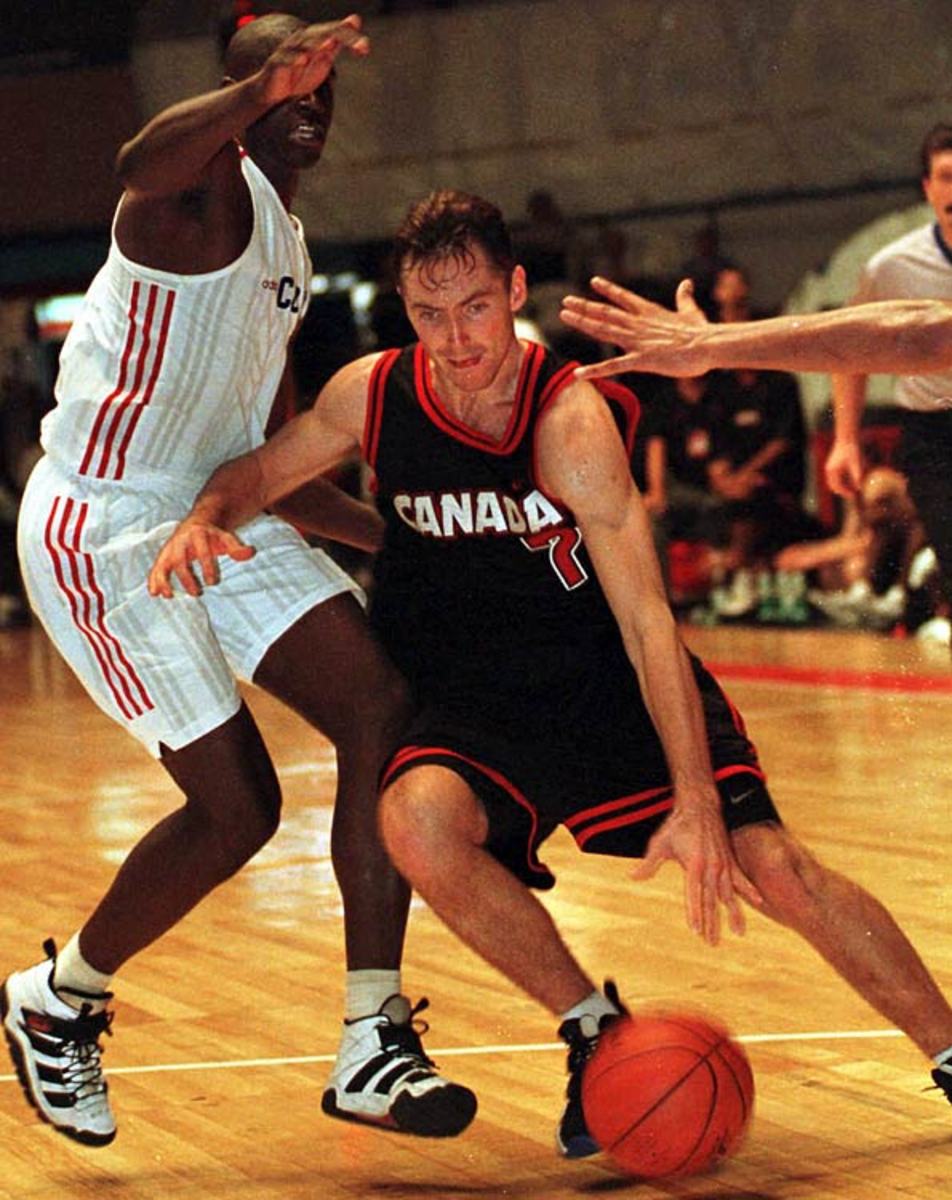
Nash also competed for the Canadian National Team, culminating in the team's appearance at the 2000 Olympics in Sydney. He also captained the team in 2004, but it did not qualify for an Olympic spot. In this photo, Nash drives around Cuba's Yudi Abreu during a Tournament of the Americas game in Montevideo, Uruguay.
Dallas Mavericks
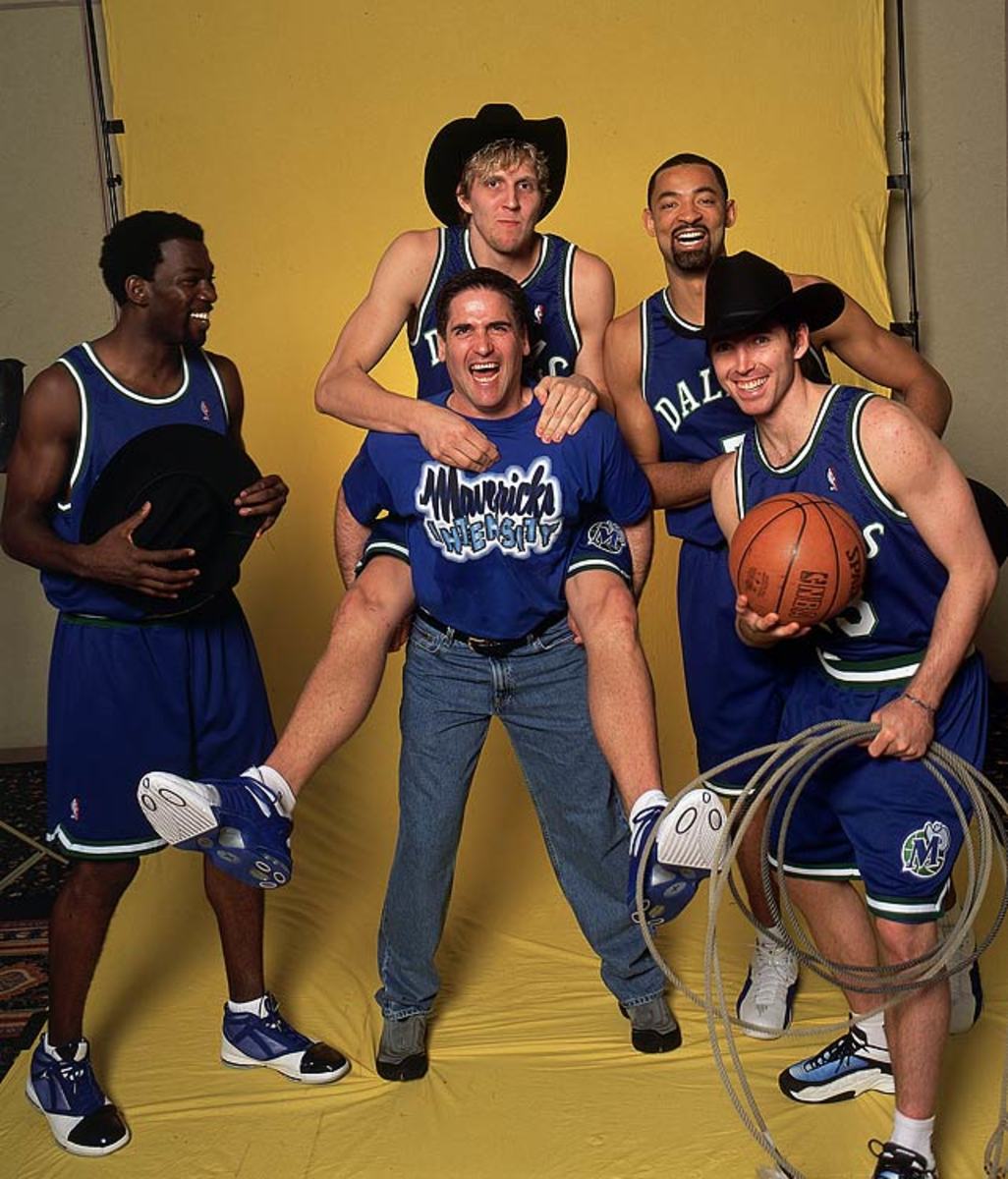
After two mediocre seasons in Phoenix, Nash was traded to Dallas for Martin Muursepp, Bubba Wells, Pat Garrity and a first-round draft pick. The Mavs struggled at first, but the drafting of Dirk Nowitzki and the acquisition of Michael Finley and Juwan Howard turned the Mavericks into contenders. The person with the biggest impact on Dallas' success was Mark Cuban, who purchased the team in 2000 and instantly turned them into contenders.
Dallas Mavericks

Under Cuban (second from left), the Mavs capitalized on the NBA's growth in international players including Eduardo Najera (Mexico), Wang Zhizhi (China), Steve Nash (Canada), Tariq Abdul-Wahad (France) and Dirk Nowitzki (Germany).
Western Conference All-Stars
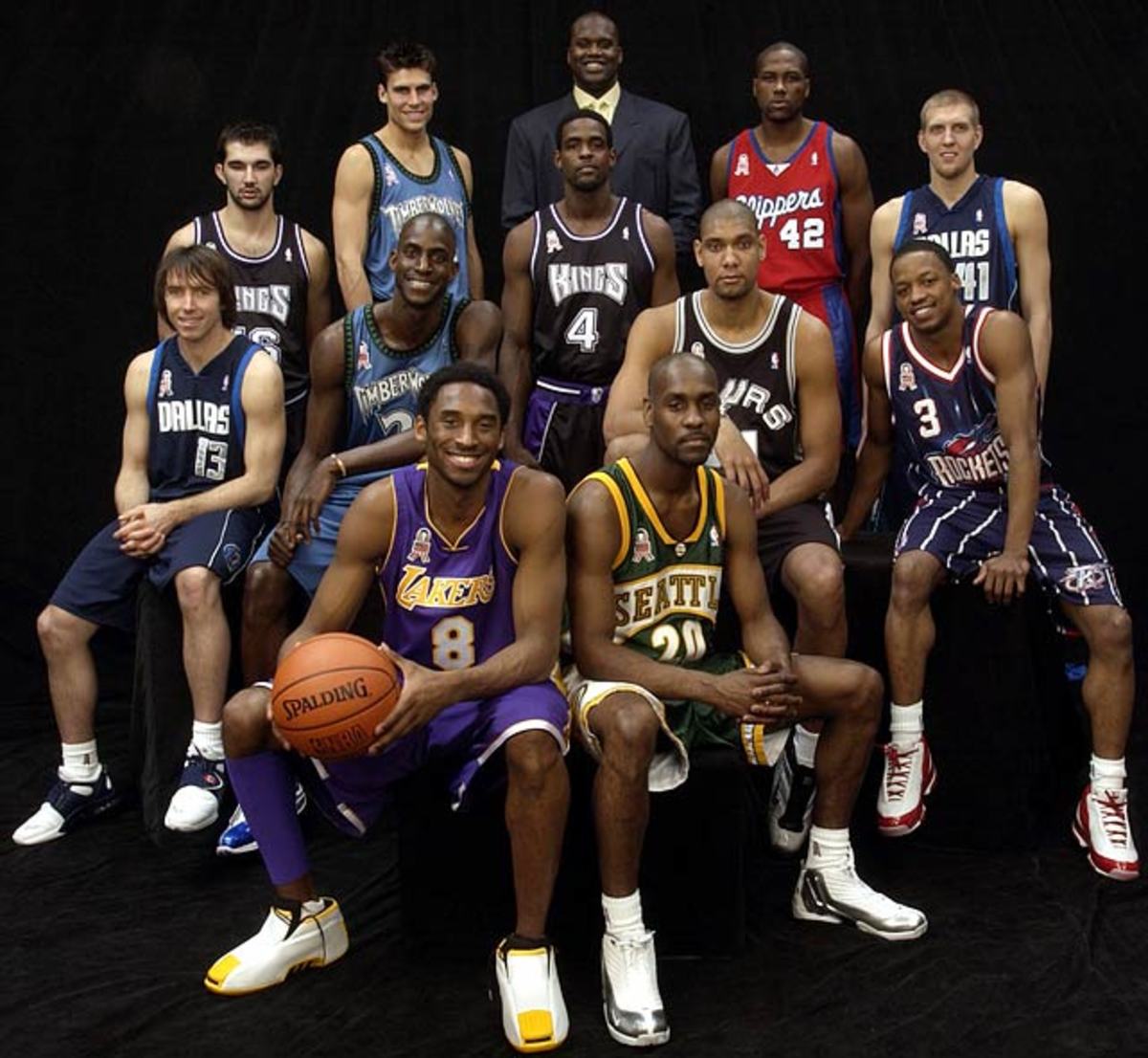
Nash poses with the Western Conference All-Stars during the NBA's 2002 All-Star Weekend in Philadelphia. The point guard dished out nine assists in the team's 135-120 triumph.
Steve Nash and Dirk Nowitzki
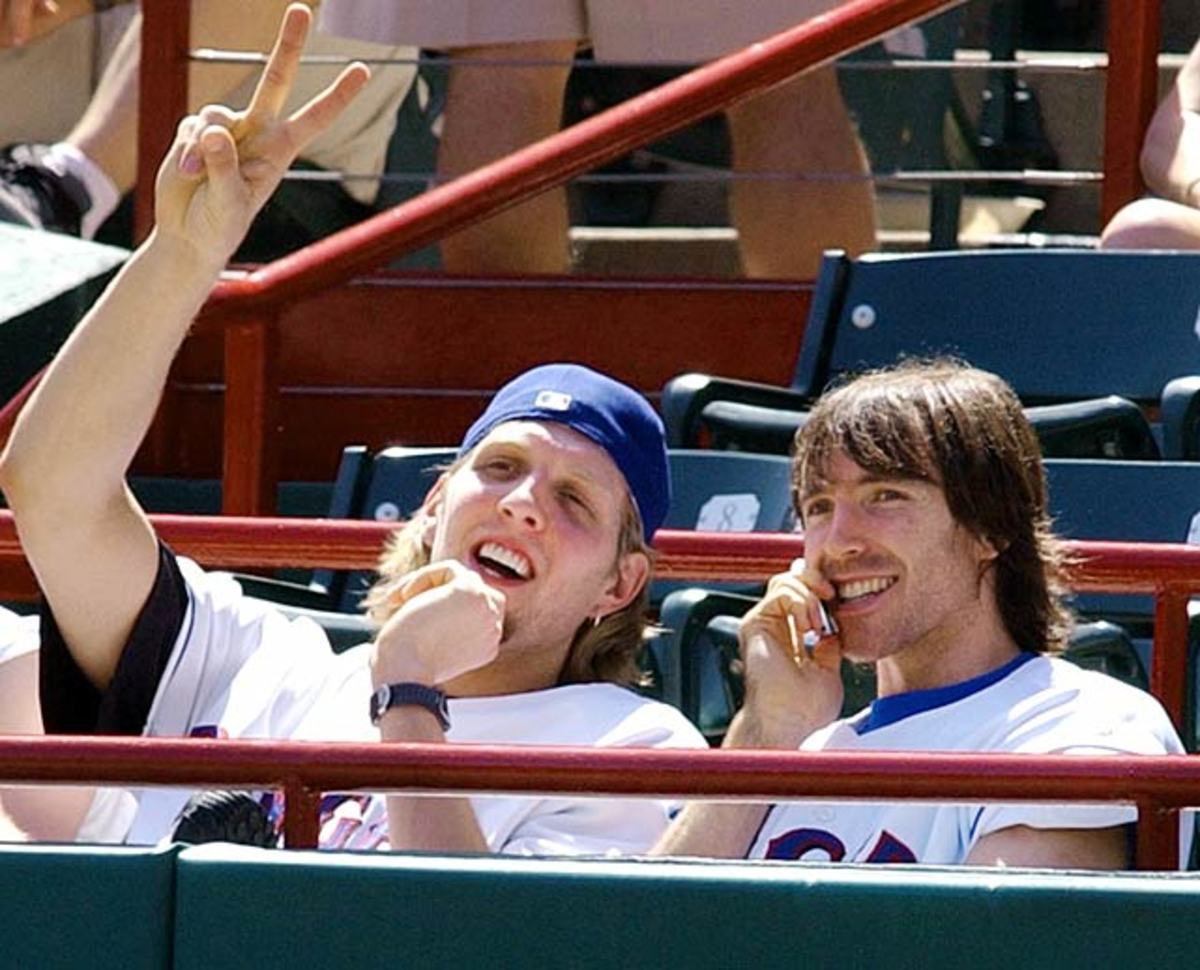
Nash and then-Mavericks teammate Dirk Nowitzki take in an April 2003 Rangers game. The two made quite the tandem that year, with Nash averaging 17.7 points and 7.3 assists per game and Nowitzki racking up 25.1 points per game. Dallas advanced to the Western Conference Finals before falling to the San Antonio Spurs.
Steve Nash

Nash shows off his soccer skills as Sports Illustrated writer Jack McCallum looks on.
Steve Nash and Jerry Colangelo
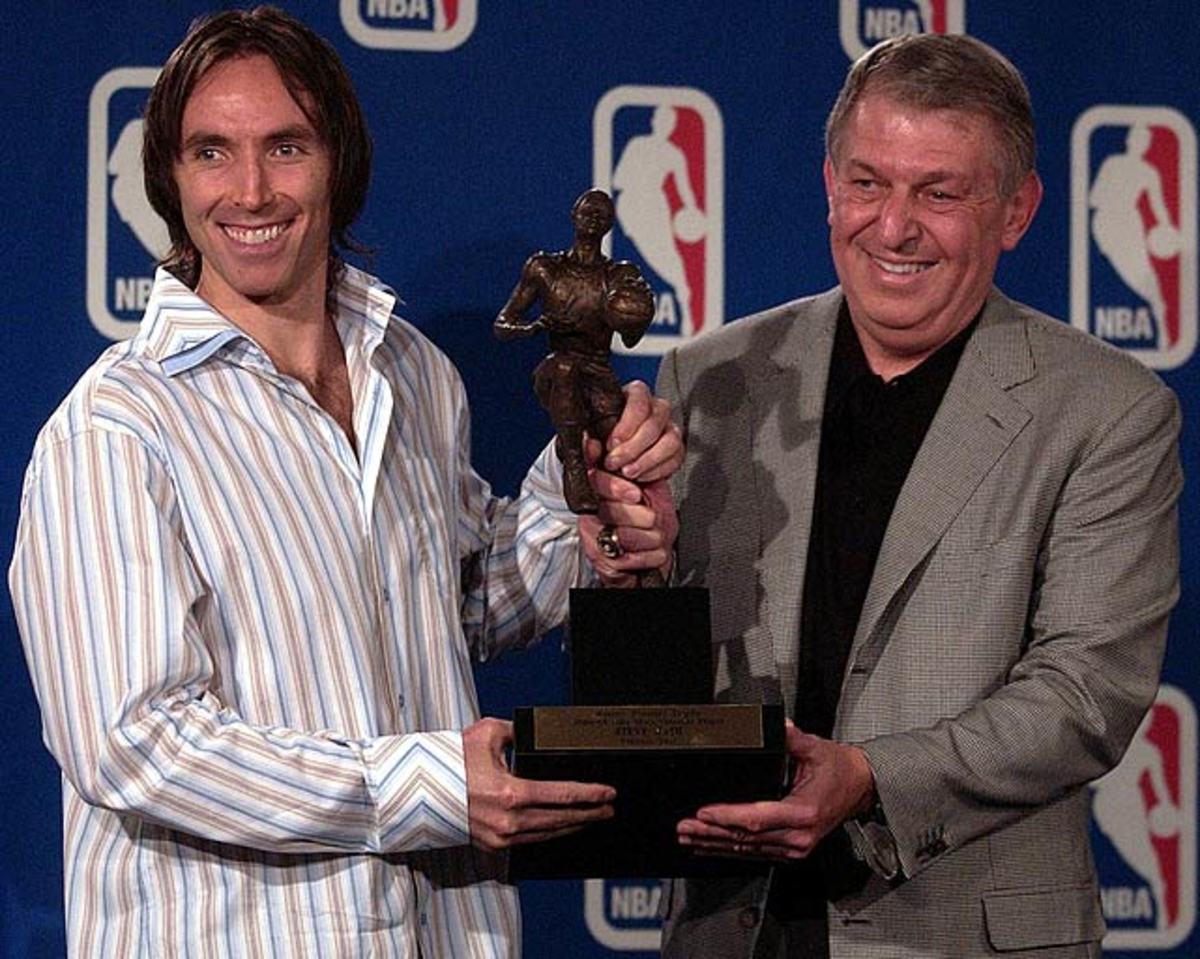
Established as one of the most unselfish players in the league, Nash received some hardware of his own in 2005. Jerry Colangelo presents him with the MVP Trophy, the first of two consecutive seasons he'd bring home the award.
Steve Nash and Fan
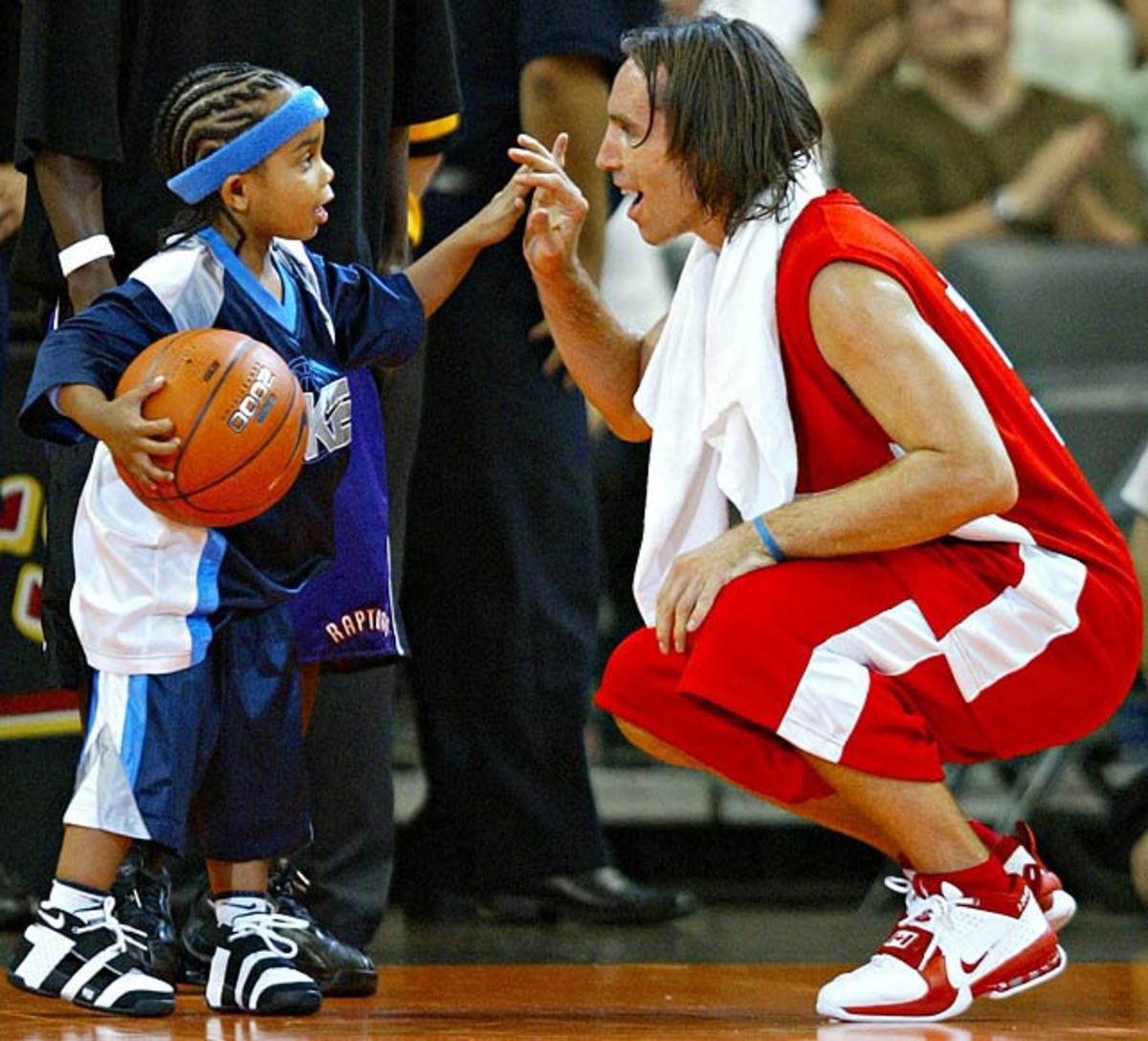
Nash squats to high-five one of his young admirers during a charity basketball event in 2005. He continues to be a fan-favorite, as he's been named to the All-Star Game seven times.
Yao Ming and Steve Nash
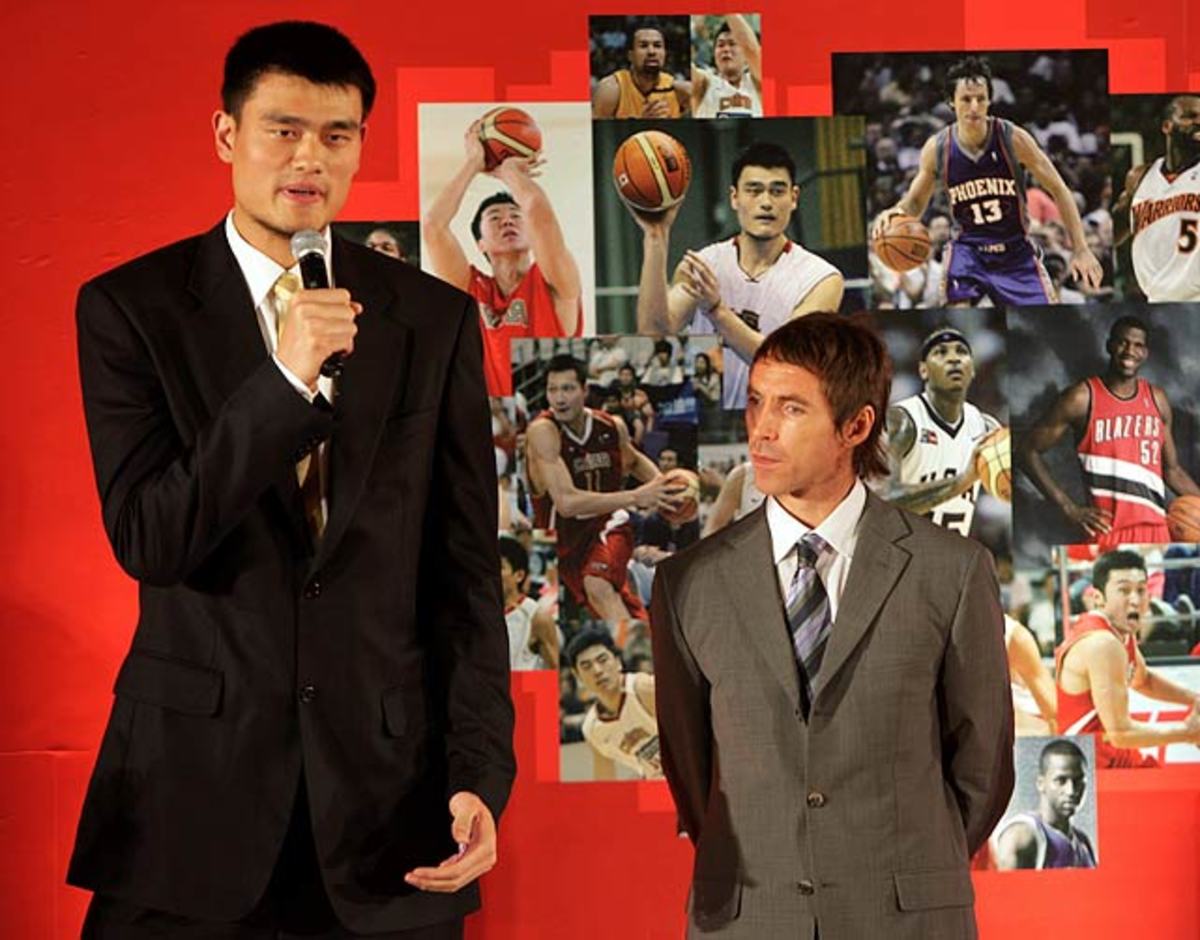
Never the tallest player in the NBA, the 6-foot-3 Nash looked shorter than ever when stationed next to the 7-foot-5 Yao Ming. Luckily, he's usually asked to guard Aaron Brooks and not the Chinese standout when Phoenix takes on Western Conference foe Houston.
Steve Nash

The view from above as Nash brings up the ball against Devin Harris and the Mavericks.
Steve Nash

Taking in another baseball game, Nash watches the Yankees play the Red Sox in 2008. He's an avid fan of baseball, soccer and hockey in addition to the NBA.
Steve Nash and Thierry Henry
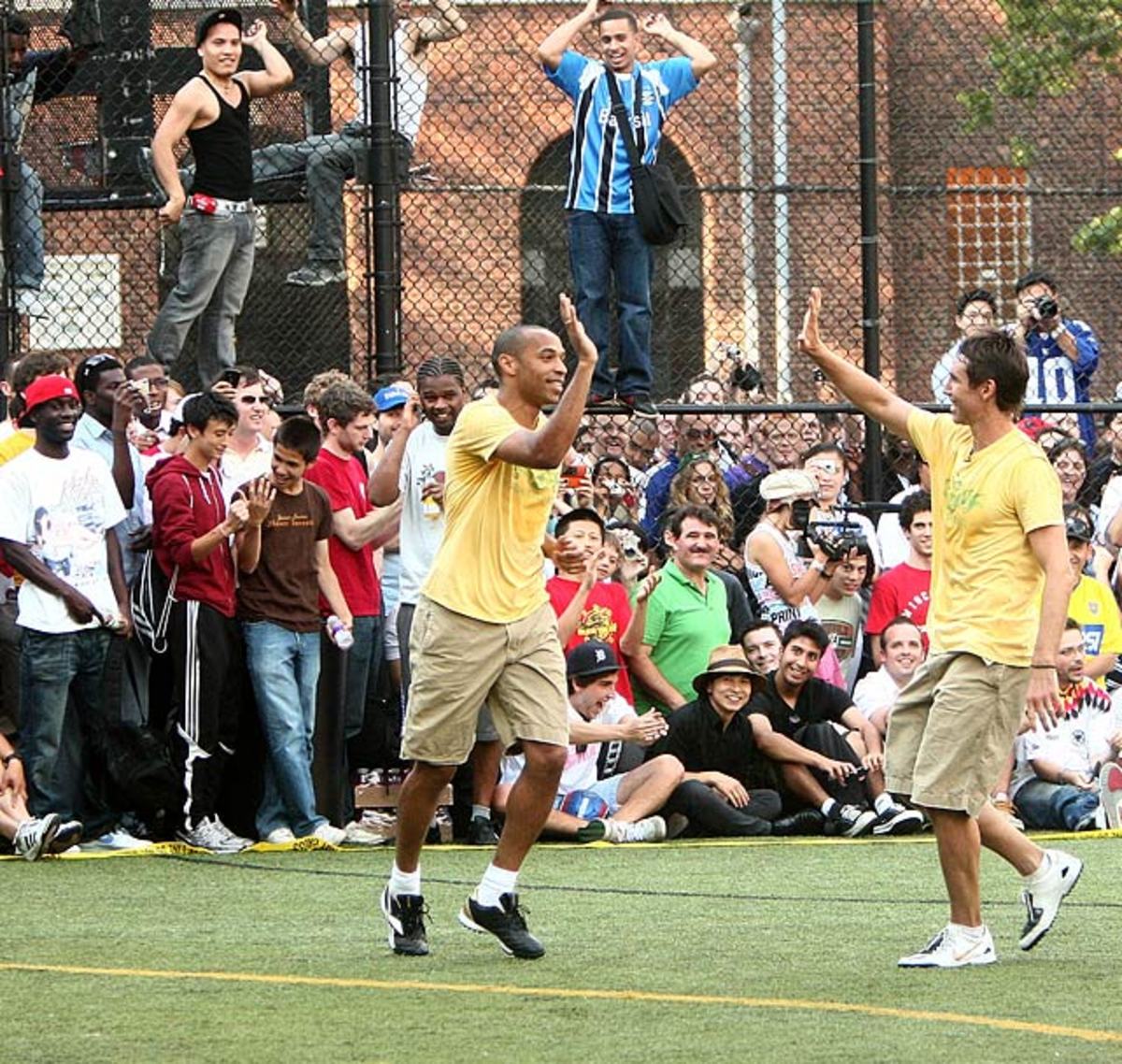
Nash celebrates with Thierry Henry during the Showdown in Chinatown celebrity soccer match in New York City in 2008. A multi-sport talent, Nash also put his soccer skills on display during the 2005 Slam Dunk contest, heading a pass to Amare Stoudemire to spark a spectacular jam.
Steve Nash and Alejandra Amarilla
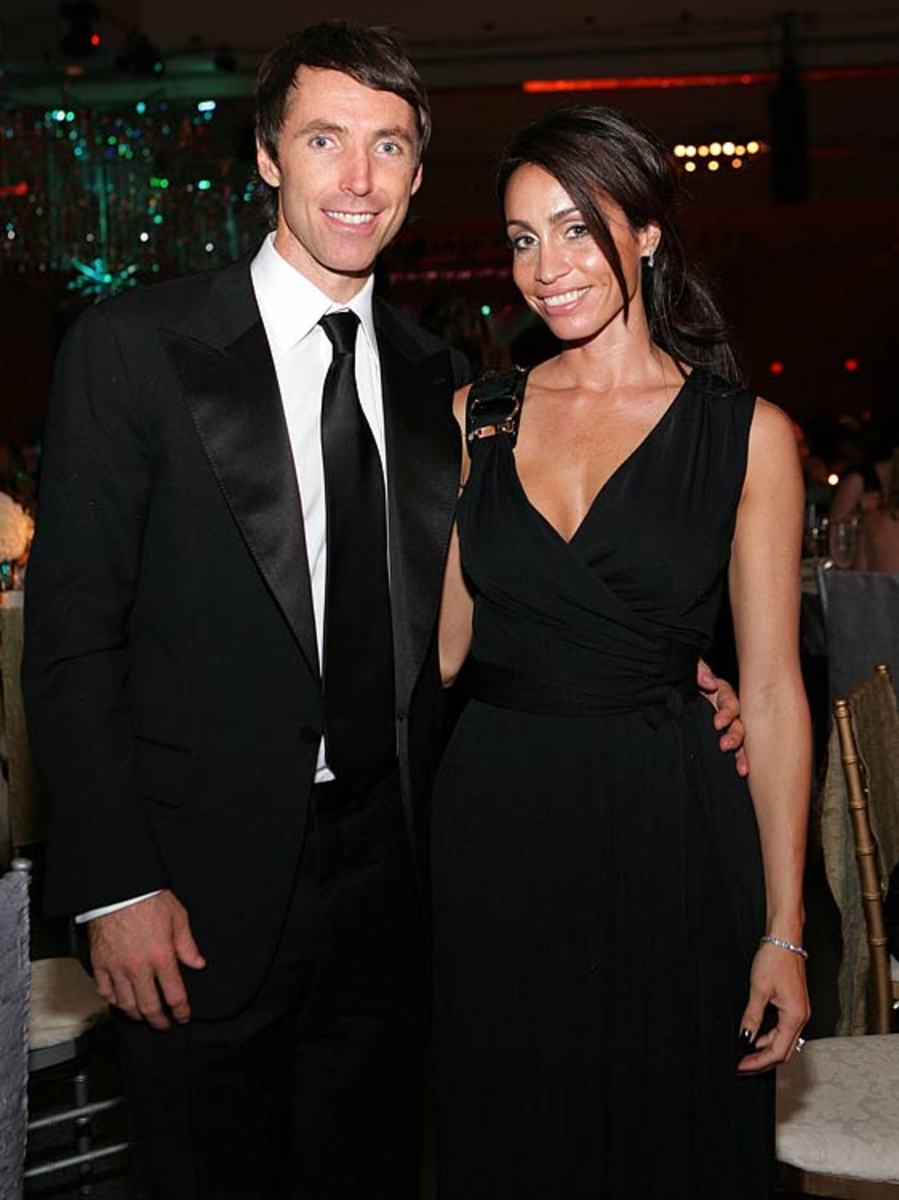
A celebrity off the court as well as on it, a sharply-dressed Nash takes a photo with wife Alejandra Amarilla. The couple has three children together, including their latest, Matteo, who was born on Nov. 12, 2010. They announced their divorce just one day after his birth.
Steve Nash and Jeff Van Gundy
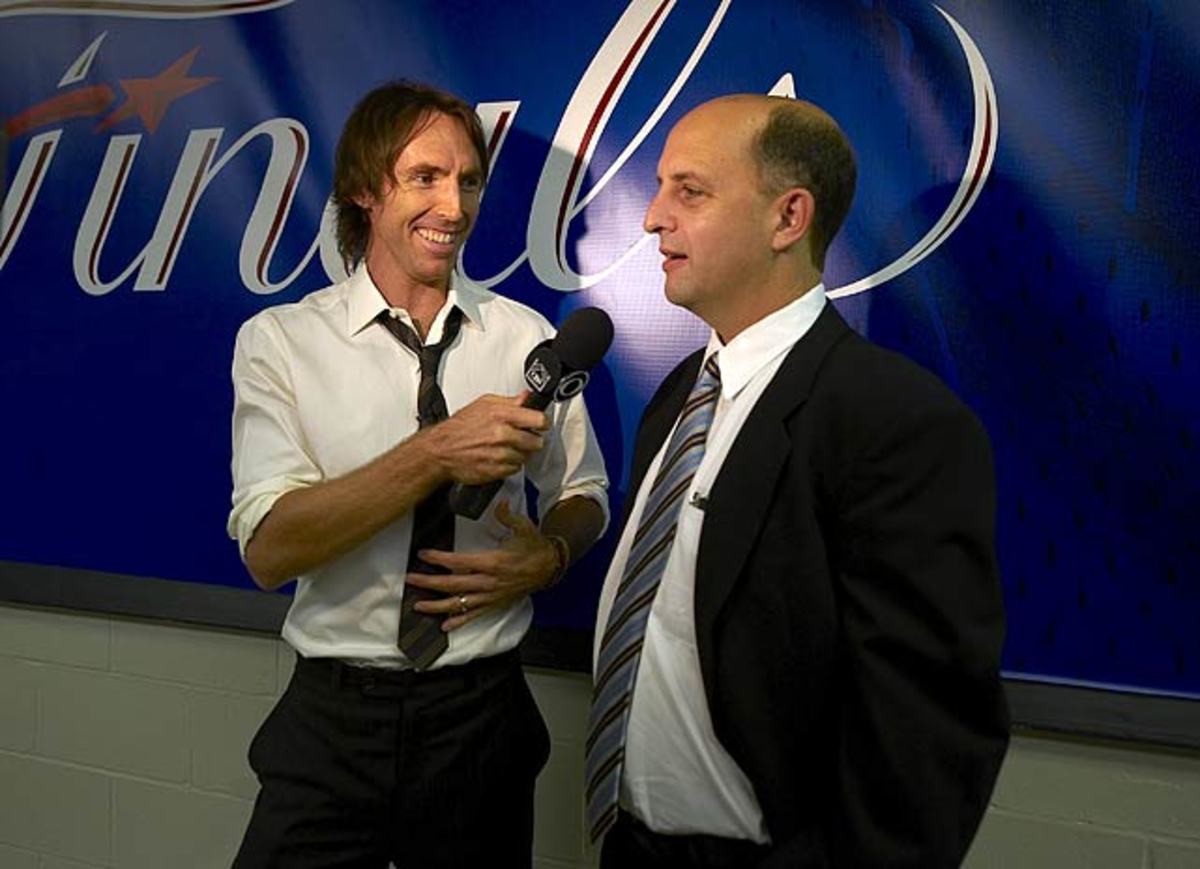
Nash's versatility extends beyond the court, as he served as a reporter for the Late Show with David Letterman before a 2009 Finals game between the Magic and Lakers. Here, his interview subject is Jeff Van Gundy.
Steve Nash

The first NBA player ever to carry the Olympic Torch, Nash hoists the flame during the opening ceremonies for the 2010 Vancouver Games. He helped light the cauldron with fellow countrymen Wayne Gretzky, Nancy Greene and Catriona Lemay Doan.
Steve Nash

Known for his gritty play, Nash broke his nose in the 2010 Western Conference Finals after he was head-butted by a charging Derek Fisher. Toughened by his childhood as hockey player in Canada, he shook off the injury, then proceeded to shake off the Lakers. Phoenix cruised to a 118-109 in Game 3.
Steve, Lola and Bella Nash
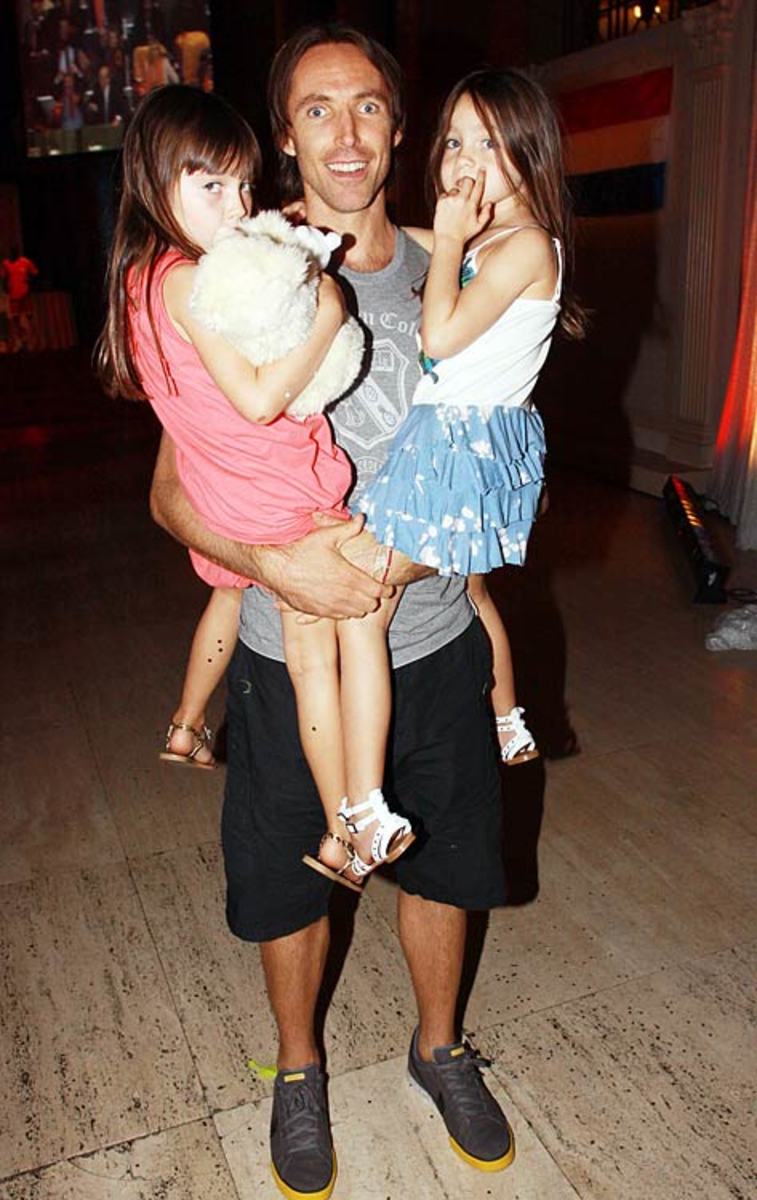
Holding his twin daughters Lola and Bella, Nash takes a picture after the World Cup Final in 2010. The girls were born on Oct. 14, 2004.
Steve Nash and Ezra Holland
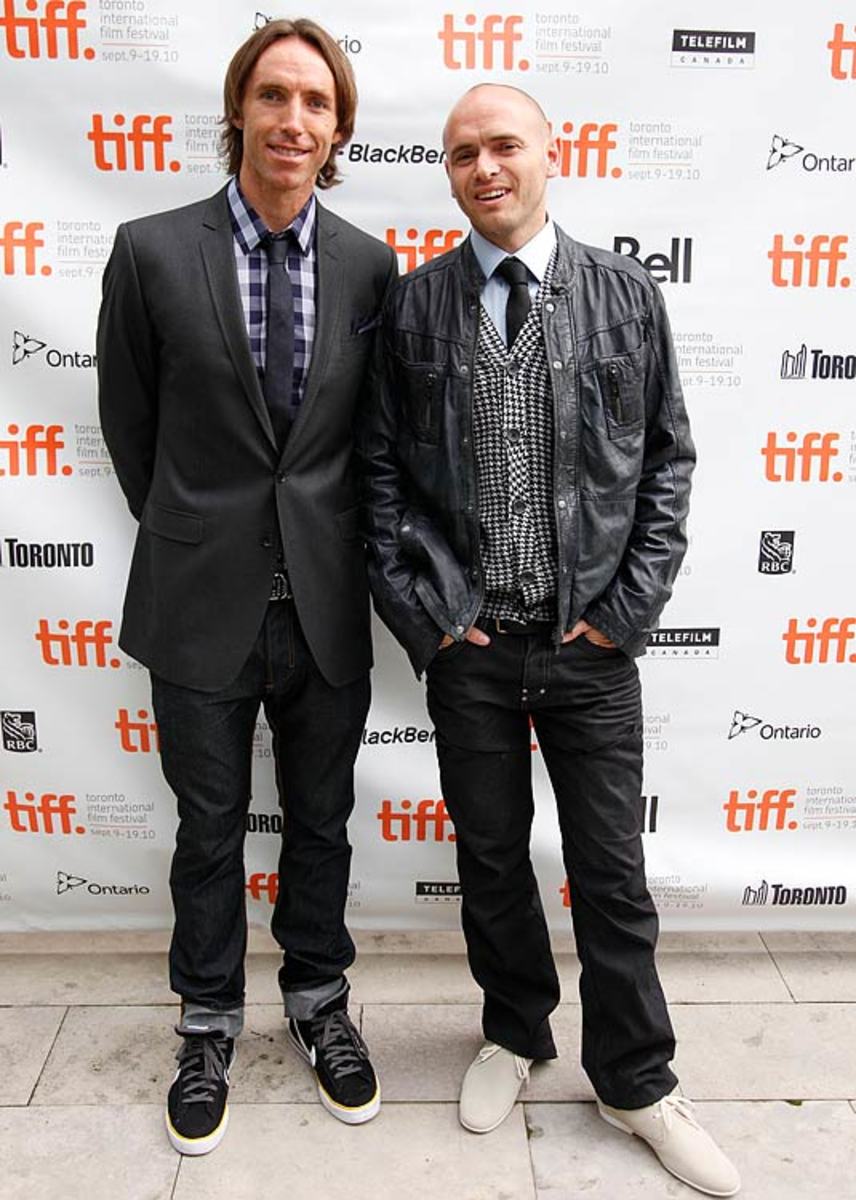
Nash smiles for the camera with Ezra Holland before the premiere of their movie Into the Wind in 2010. The story, Nash's filmmaking debut, details the tale of Terry Fox, a marathon runner trying to raise cancer awareness. It was featured in ESPN's 30 for 30 campaign.
Steve Nash and Amare Stoudemire
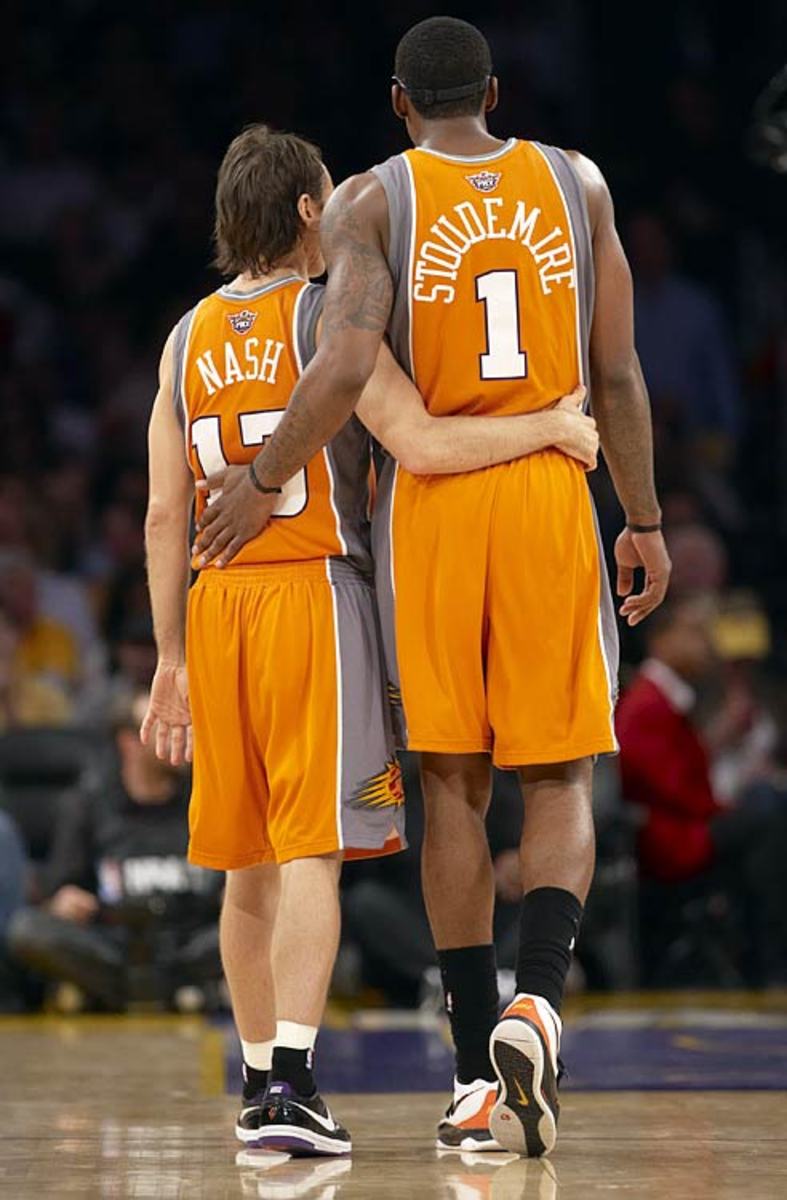
A dynamic duo, Nash and Amare Stoudemire share an embrace during Game 2 of the 2010 Western Conference Finals. The Suns would drop the contest 124-112, but would stun the Lakers for victories in Games 3 and 4 to even the series at two. They suffered hard-fought losses in Games 5 and 6, though, as Los Angeles went on to claim a repeat NBA title.
Still, the Lakers kept paying Nash, so it was appropriate that he returned to their headquarters two months ago and began tutoring rookies Julius Randle and Jordan Clarkson. Randle, who broke his leg on Opening Night, was limited to form shooting. Nash taught him to extend his wrist on the follow-through. “I know things didn’t go well here,” Nash says. “It blew up. But I wanted the pressure. I wanted the challenge. I don’t regret it.”
He isn’t going anywhere. He has settled in Manhattan Beach with his 10-year-old twin daughters, Lola and Bella, and his 4-year-old son, Matteo. Nash is divorced with split custody, and for once, he can read to the kids without thinking about the gym. Both his girls play volleyball, the unofficial pastime of L.A.’s South Bay, and he observes youth sports with curiosity. “Parents try to buy the 10,000 hours,” he says. “It’s drills and strength coaches and skill development. But you lose a lot. At the park, there’s no instruction, so you create constantly.”
His own childhood home in Victoria backed up to Hillcrest Elementary School, which felt like a private playground. His mom, Jean, established a Netball team for young mothers and he tagged along to practices. His father, John, was a professional soccer player who praised his passes more than his goals. “That’s what made him happy,” Nash says. “So when my dad told me he liked a pass, I wanted to recreate it and get that positive reinforcement – that love from my father.” He tries to follow his parents’ example. “I want to foster in my kids a passion for sports, but I have to be careful. I can’t do it completely. I can only open an environment and encourage them in whatever they do.”
Jean and John worry about their oldest son, that the nerve trouble will be chronic, despite his protests to the contrary. “His body has to work another 50 years,” Jean says. Nash is already general manager of Canada’s national team. His Steve Nash Foundation has raised and granted $4.75 million in the last decade for child welfare. The production company he started with his cousin, Ezra Holland, has created several critically acclaimed documentaries. Nash could go in any of those directions – basketball, philanthropy, film – or in all, or in none.
For now, he is just finishing his Horiatiki salad and then picking up Matteo at school. “I’m trying to be as unencumbered and uninfluenced as possible,” he says, “so I can say goodbye to this part of my life and find out what the next part is going to hold.” His cup is empty. The one he leaves behind overflows.
